For thousands of years, people have been gazing at the sky. Whether it’s for crafting stories and mythologies, marking the shifting seasons, or guiding their way across the world’s oceans, the celestial dome has been one of the most significant aids in human history. In this compilation, we highlight the 25 most luminous celestial objects that should be visible to you (subject to the level of light pollution in your location) simply by looking skyward.
Objects in our sky are ranked by how bright they appear to the average person on Earth – a measure known as apparent visual magnitude. Over the course of a year, the apparent magnitude of a celestial body changes, due to two primary factors: firstly, we see a different sky throughout the course of the year, so a celestial body may not always be visible in our night sky; secondly, since the universe is constantly in motion, some bodies move further away from us with time. Though some objects are easy to spot in the sky, such as our beloved Moon, some are harder to spot unless you know where (or in which constellation) to look. For stargazers and amateur astronomers alike, read this list and see if you can find the 25 Brightest Objects in Space That You Can See With Your Naked Eye.

Carina Nebula
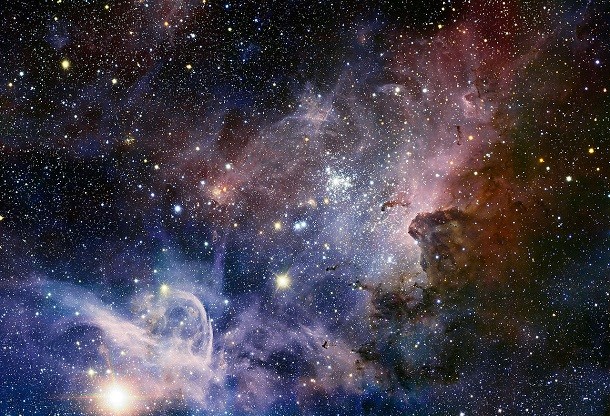 Source: Hipparcos Catalogue & NASA, Image: Wikipedia
Source: Hipparcos Catalogue & NASA, Image: Wikipedia We start off our list of the “25 Brightest Objects In Space That You Can See With Your Naked Eye” with the only nebula on our list: the Carina Nebula. A nebula is an interstellar cloud filled with dust and ionized gases. The Carina Nebula is especially notable for hosting the brightest star in the Milky Way Galaxy – WR25. Though it’s 6,300,000 times brighter than our sun, the star doesn’t make it onto our top 25 list due to its distance from Earth – about 7,500 light years. (In contrast, the sun is .000016 light years away from us.)
Spica
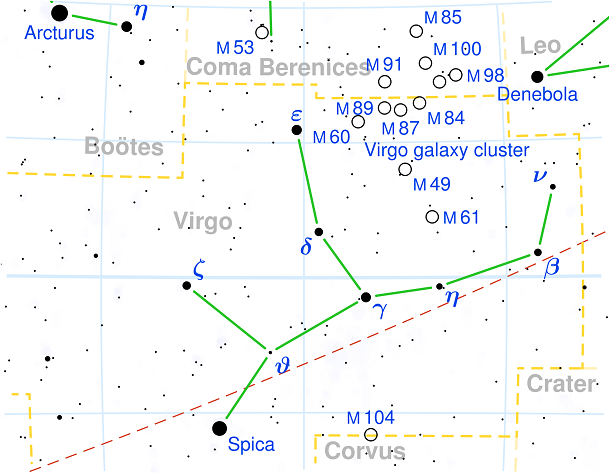 Source: Hipparcos Catalogue & NASA, Image: Wikipedia
Source: Hipparcos Catalogue & NASA, Image: Wikipedia Though we can see other galaxies and nebulae in the night sky – such as our own Milky Way Galaxy and the Orion Nebula, Pleiades, and Andromeda Galaxy – in terms of apparent magnitude, they’re dimmer than the other celestial objects on this list. The first star on our list, Spica is the brightest star in the Virgo constellation. Well, technically, it’s two stars so close together they look like an egg-shaped star.
Antares
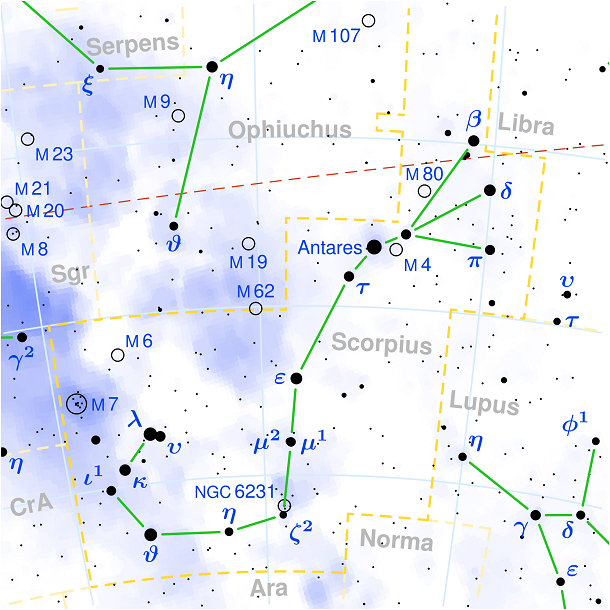 Source: Hipparcos Catalogue & NASA, Image: Wikipedia
Source: Hipparcos Catalogue & NASA, Image: Wikipedia The third furthest star on our list at a distance of 600 light years, Antares is often called the “heart of the scorpion” as it’s the brightest star in the Scorpius constellation. Antares is most visible around May 31st when it is completely opposed to the sun, rising at dusk and setting at dawn.
Aldebaran
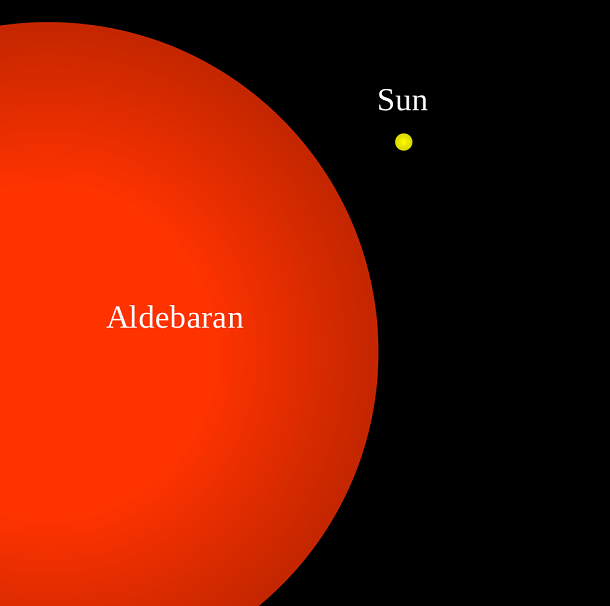 Source: Hipparcos Catalogue & NASA, Image: Wikimedia
Source: Hipparcos Catalogue & NASA, Image: Wikimedia The star Aldebaran (not to be confused with the Star Wars planet of Princess Leia, Alderaan) is the brightest star in the Taurus constellation. Its name comes from the Arabic words for “the Follower”. Aldebaran is remarkably easy to find in the night sky – just find Orion’s belt and follow the three stars from left to right (or right to left if you’re in the Southern Hemisphere) to find the next brightest star. Humanity will have a closer look at Aldebaran when the Pioneer 10 probe passes by in two million years. Yippee. Can’t wait.
Alpha Crucis (Acrux)
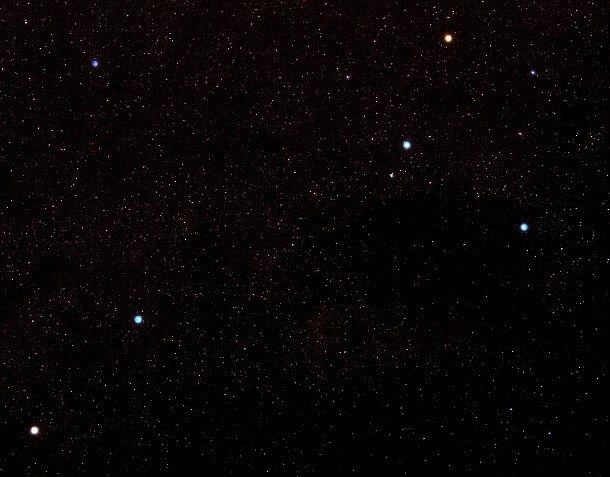 Source: Hipparcos Catalogue & NASA, Image: Wikipedia
Source: Hipparcos Catalogue & NASA, Image: Wikipedia One of the most recognizable figures in the night sky is the Southern Cross, also known as the constellation Crux. Its brightest star, Alpha Crucis (Acrux, for short) can be found on the flags of five countries: Australia, Papua New Guinea, Samoa, New Zealand, and Brazil. To find it, look for the “bottom” of the Southern Cross.
Altair
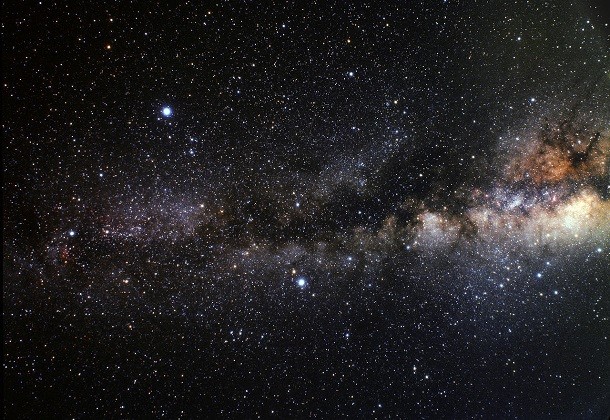 Source: Hipparcos Catalogue & NASA, Image: Wikimedia
Source: Hipparcos Catalogue & NASA, Image: Wikimedia The twelfth brightest star on our list (though 20th brightest celestial body), Altair is the second most luminous point of the Summer Triangle to us. It’s also the nearest star in the Triangle to Earth. (Deneb, the dimmest star to us, is 214 times further away and 7,000 times brighter than Altair when seen from the same distance away. The brightest star in the Triangle is #13.)
Beta Centauri (Agena, Hadar)
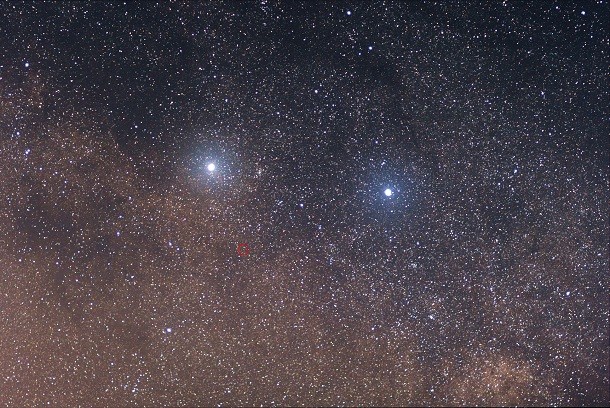 Source: Hipparcos Catalogue & NASA, Image: Wikipedia
Source: Hipparcos Catalogue & NASA, Image: Wikipedia Composed of three stars, the trinary star system of Beta Centauri has historically been one of the most important and brightest objects in space. Navigators drew a line through #11 and Beta Centauri – the two ends of the “Pointers” to the Southern Cross – to determine which direction was south. The Cross is used the same in the Southern Hemisphere as Polaris (the North Star) is in the Northern – as a stable reference point.
Betelgeuse
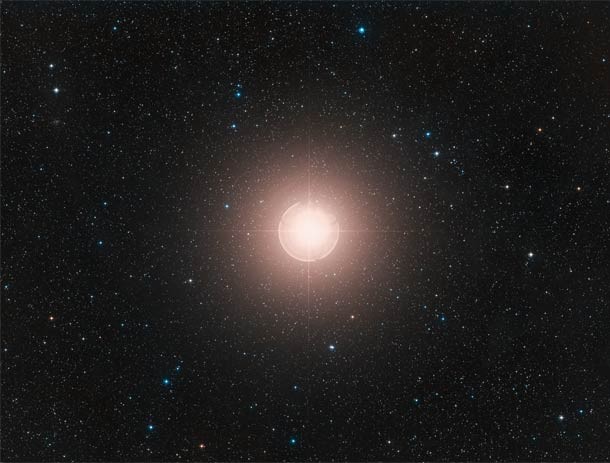 Source: Hipparcos Catalogue & NASA, Image: Wikipedia
Source: Hipparcos Catalogue & NASA, Image: Wikipedia Don’t say it three times! The star Betelgeuse is so large that if it were in the place of our sun, its diameter would extend out to somewhere between Mars and Jupiter. This massive supergiant has the most variable visual magnitude on our list and can be seen nearly everywhere from fall to spring. Look for a bright red star perpendicular to Orion’s belt.
Achernar
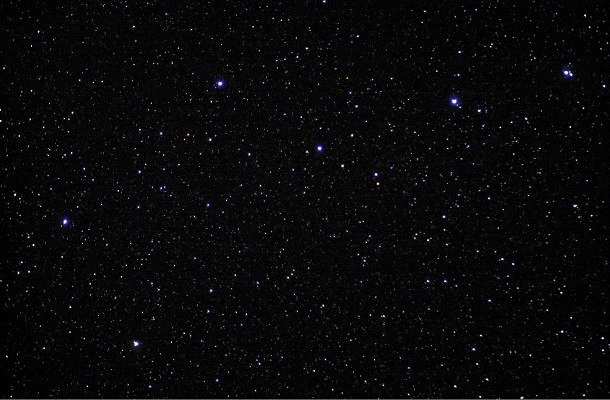 Source: Hipparcos Catalogue & NASA, Image: Wikipedia
Source: Hipparcos Catalogue & NASA, Image: Wikipedia Achernar is the bluest (and hottest) object in space that we can see with the naked eye. Interestingly, due to its orbital path, Achernar was not visible to most of our predecessors, including the Ancient Egyptians. Due to its extremely fast rotational speed, Archernar is the least spherical shape in our Milky Way Galaxy.
Procyon
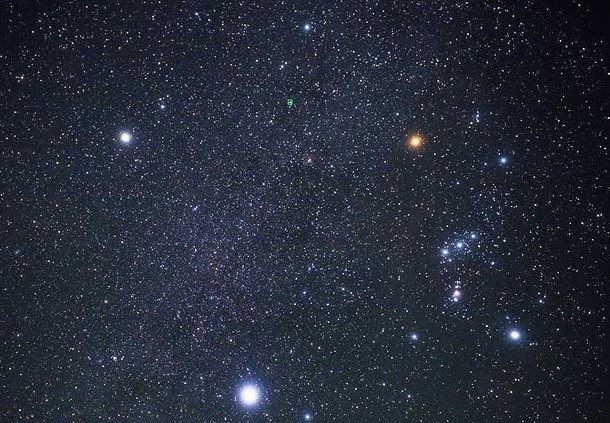 Source: Hipparcos Catalogue & NASA, Image: Wikipedia
Source: Hipparcos Catalogue & NASA, Image: Wikipedia The second brightest star in the Winter Triangle (after #9 and before #18), Procyon appears reddish in the sky, especially in late winter. Culture after culture have used the star, from Babylonians to Hawaiians to the Kalapalo people of Brazil. Curiously, the Inuit referred to Procyon as Sikuliarsiujuittuq, after the story of a fat man who stole from other Inuit hunters because he was too heavy to hunt on the ice. He died when other hunters convinced him to go on newly formed sea-ice and he drowned. The red color of his blood was associated with Procyon.
Rigel
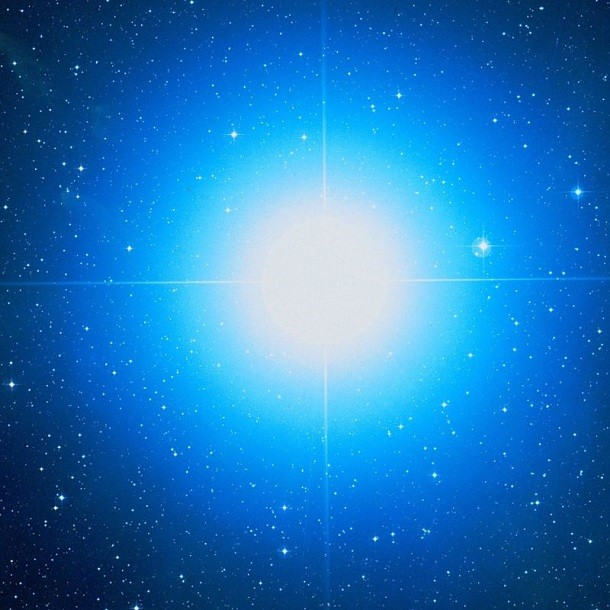 Source: Hipparcos Catalogue & NASA, Image: Wikipedia
Source: Hipparcos Catalogue & NASA, Image: Wikipedia The brightest star in the Zodiac constellation of Orion, Rigel is diagonally opposite of Orion’s Belt from #18, Betelgeuse. The furthest star from Earth on our list, Rigel is about 863 light years away. It is notable for its variable magnitude, caused by its pulsations, themselves the result of nuclear reactions from hydrogen fusion.
Capella
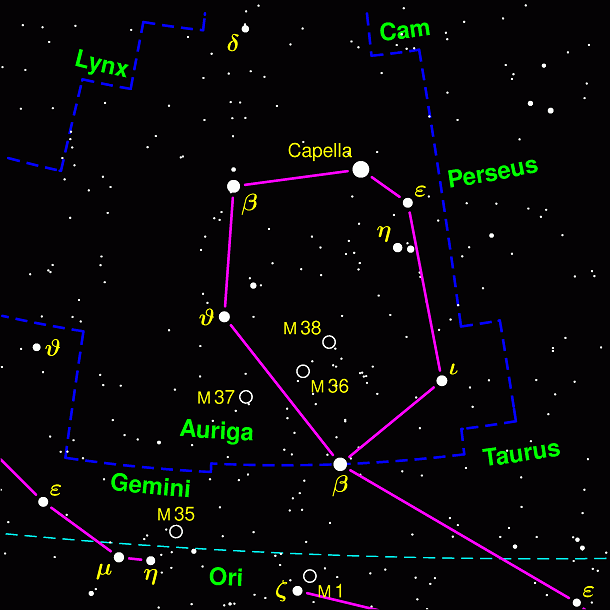 Source: Hipparcos Catalogue & NASA, Image: Wikipedia
Source: Hipparcos Catalogue & NASA, Image: Wikipedia Translated from Latin, Capella means “little female goat”. It doesn’t sound very befitting, but the Greeks used this star to represent the goat that suckled the god Zeus. With a visual magnitude of 0.07, Capella is the third brightest star in the northern hemisphere. For people living in latitudes north of 44°N, the star is visible both day and night.
Vega
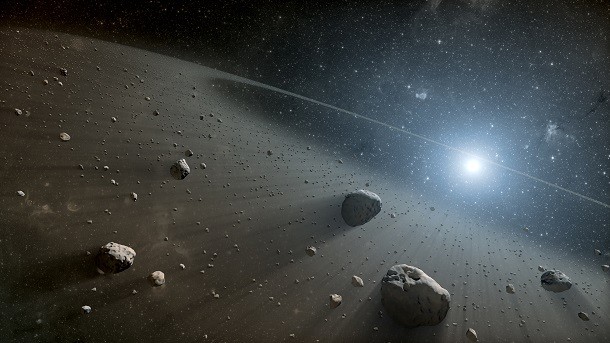 Source: Hipparcos Catalogue & NASA, Image: Wikimedia
Source: Hipparcos Catalogue & NASA, Image: Wikimedia Vega is one of the most important stars in the heavens, with some even saying it’s the second most important after our sun. Located only 25 light years away from Earth, Vega used to be the northern pole star about 14,000 years ago (and it will be again around 13,727 A.D.) until its changing orbit made it less bright than Polaris. Vega was also notably the first non-Sun star to be captured on film.
Arcturus
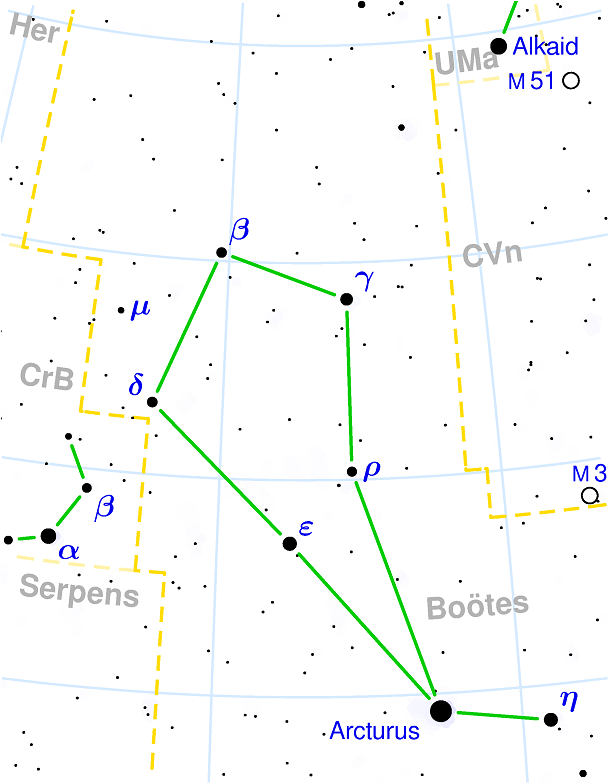 Source: Hipparcos Catalogue & NASA, Image: Wikipedia
Source: Hipparcos Catalogue & NASA, Image: Wikipedia The brightest star in the northern celestial hemisphere is Arcturus. This orange giant is likely the reason Polynesians were able to navigate across the Pacific so effectively. Combined with #9, Tahitians and Hawaiians could easily navigate between each island. To find Arcturus in the night sky, follow the handle of the Big Dipper until you find a bright star.
Alpha Centauri
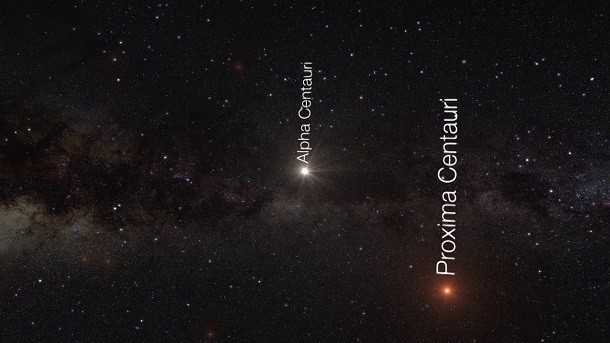 Source: Hipparcos Catalogue & NASA, Image: Vimeo
Source: Hipparcos Catalogue & NASA, Image: Vimeo Alpha Centauri is part of a binary star system with #19. Though not much more luminous than our Sun, this star system is the closest (at 4.37 light years away) to our Solar System. Moreover, it acts as one end of the Southern Pointers which helped Ferdinand Magellan and other navigators find their way around the Southern Hemisphere. Many astronomers believe a planet (or many) could be orbiting the stars.
Canopus
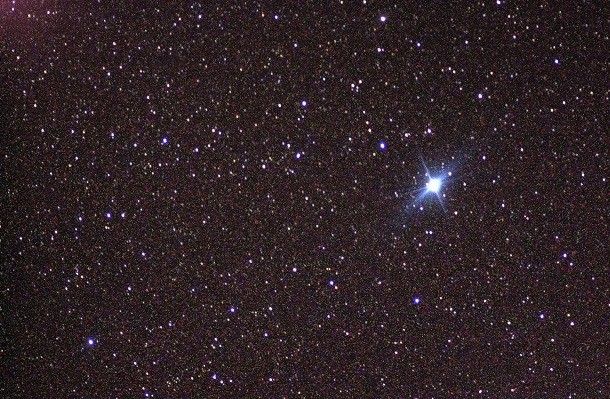 Source: Hipparcos Catalogue & NASA, Image: Wikipedia
Source: Hipparcos Catalogue & NASA, Image: Wikipedia The second brightest star in the night sky, Canopus would have been seen as the brightest star in the sky by many of our dinosaur ancestors. Though #9 has since moved closer to clinch the brightest star title from Canopus, the star will have its day (or night) again in about 480,000 years when it again becomes the brightest star in the night sky. Though it looks bright white to the naked eye, Canopus can look yellowish when seen through a telescope.
Sirius
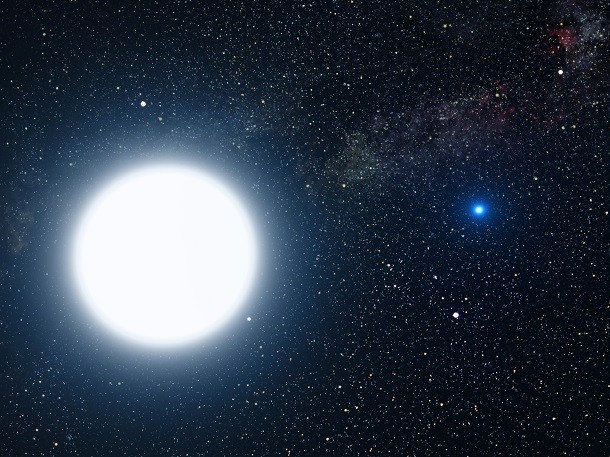 Source: Hipparcos Catalogue & NASA, Image: Wikipedia
Source: Hipparcos Catalogue & NASA, Image: Wikipedia The all-time brightest star in the night sky is not, in fact, the well-known North Star, but rather Sirius: the “Dog Star”. The brightest star in Canis Major, Sirius partially makes up what is referred to as “Orion’s dog”. The phrase “dog days are over” (such as in the Florence + The Machine song) originates from Sirius. Based on the star’s position in the sky, the Ancient Greeks (and us) could tell when the dog days – the hottest, most brutal summer days – were beginning.
Saturn
 Source: Hipparcos Catalogue & NASA, Image: Wikimedia
Source: Hipparcos Catalogue & NASA, Image: Wikimedia The first (and dimmest) planet viewable to the naked eye, Saturn is one of the most spectacular celestial bodies to point a telescope towards. Even basic telescopes (with a minimum of 30 times magnification) are able to make out Saturn’s iconic rings, primarily composed of ice particles and rocky debris. Saturn’s largest moon, Titan, is larger than Mercury and can be seen with strong binoculars.
Mercury
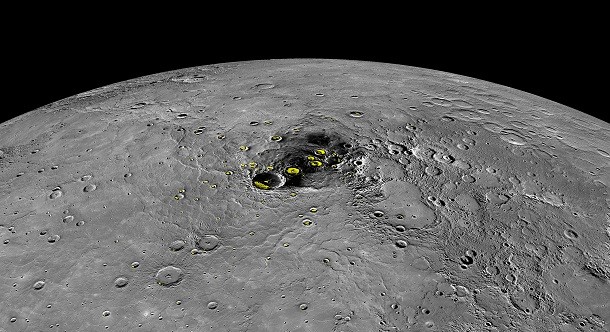 Source: Hipparcos Catalogue & NASA, Image: Wikipedia
Source: Hipparcos Catalogue & NASA, Image: Wikipedia Mercury is the 7th brightest object in the sky which is visible to the naked eye. Since Mercury (and #4) orbit the Sun within Earthian orbit, the planet can only be seen in the morning or evening, never in the thick of night. Just like our Moon, Mercury has a range of phases which can be seen with a telescope.
Mars
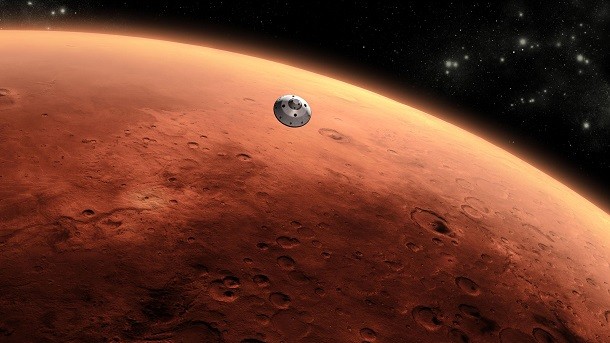 Source: Hipparcos Catalogue & NASA, Image: Wikimedia
Source: Hipparcos Catalogue & NASA, Image: Wikimedia Mars has been the focus of amateur and professional astronomers alike for thousands of years. Easily distinguishable in the night sky by its reddish color, the Red Planet has an apparent magnitude of -2.91. Most easily seen from July to September, in August 2003, Mars was the brightest to us that it has been in 60,000 years.
Jupiter
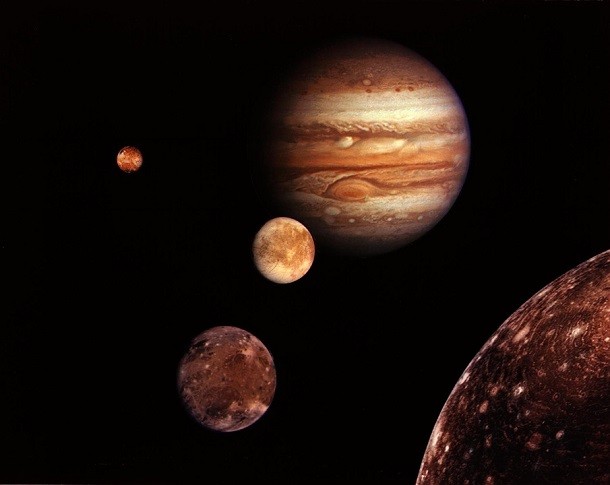 Source: Hipparcos Catalogue & NASA, Image: Pixabay
Source: Hipparcos Catalogue & NASA, Image: Pixabay The largest planet in the Solar System, Jupiter is an easy target to pick out in the sky. Using a basic telescope, you can pick out the iconic cloud belts drooped across Jupiter’s surface and maybe even see its four largest moons. If you catch it at the right time, Jupiter’s Great Red Spot is visible with a strong telescope.
Venus
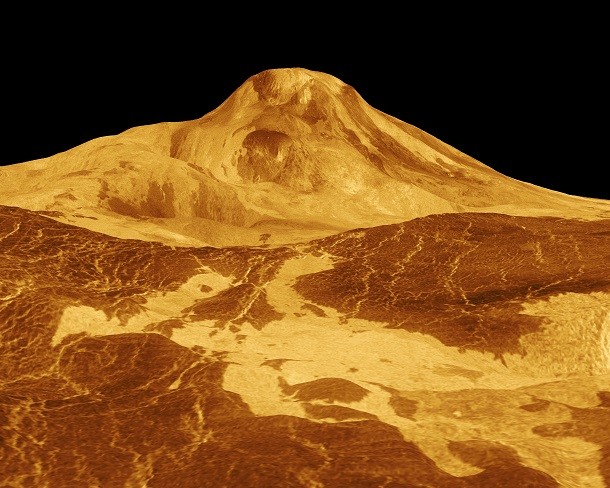 Source: Hipparcos Catalogue & NASA, Image: Wikipedia
Source: Hipparcos Catalogue & NASA, Image: Wikipedia The brightest planet we can see with the naked eye, Venus has played a role in human culture for millennia. Known by poets as the “morning star” and as the “evening star”, Venus can be seen after sunset after it overtakes the Earth on its yearly cycle and before sunrise after it passes the Earth. Venus is so bright that it can be seen at midday.
International Space Station
 Source: Hipparcos Catalogue & NASA, Image: Wikipedia
Source: Hipparcos Catalogue & NASA, Image: Wikipedia The only man-made object on our list, the International Space Station orbits the Earth over 15 times a day, creating plenty of viewing opportunities, though it is often confused for a rapidly-moving plane. To find out where and when the ISS will be in the sky above your head, check out NASA’s Spot the Station at https://spotthestation.nasa.gov/.
Moon
 Source: Hipparcos Catalogue & NASA, Image: Pixabay
Source: Hipparcos Catalogue & NASA, Image: Pixabay Our beloved Moon is the most recognizable (and biggest) object in the night sky. Sometimes visible during the day, the moon always shows us the same face because it is locked into a synchronous rotation. Though George W. Bush initially proposed the construction of a lunar base by 2024, NASA’s focus has since shifted to putting man in orbit around Mars by 2035.
Sun
 Source: Hipparcos Catalogue & NASA, Image: Pixabay
Source: Hipparcos Catalogue & NASA, Image: Pixabay It should come as no surprise that our life-giving star is the brightest object in the sky. Though you can see it with the naked eye, you might want to avoid doing so; though looking at the sun for a few seconds can’t actually cause you to go blind, looking at it for a few hours will. Besides being the brightest object in the sky with an apparent magnitude of -26.74, the Sun is also our closest star.



























